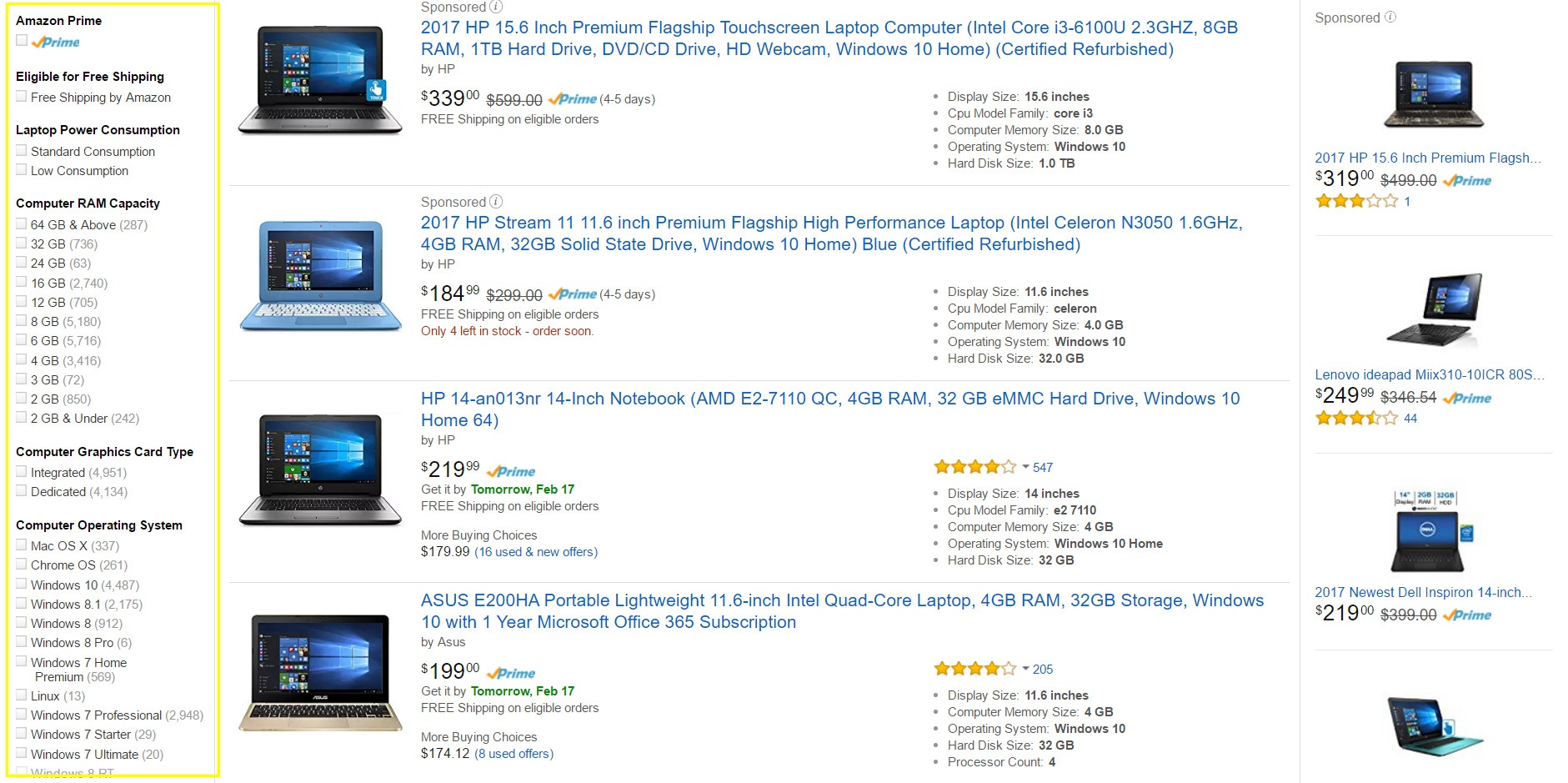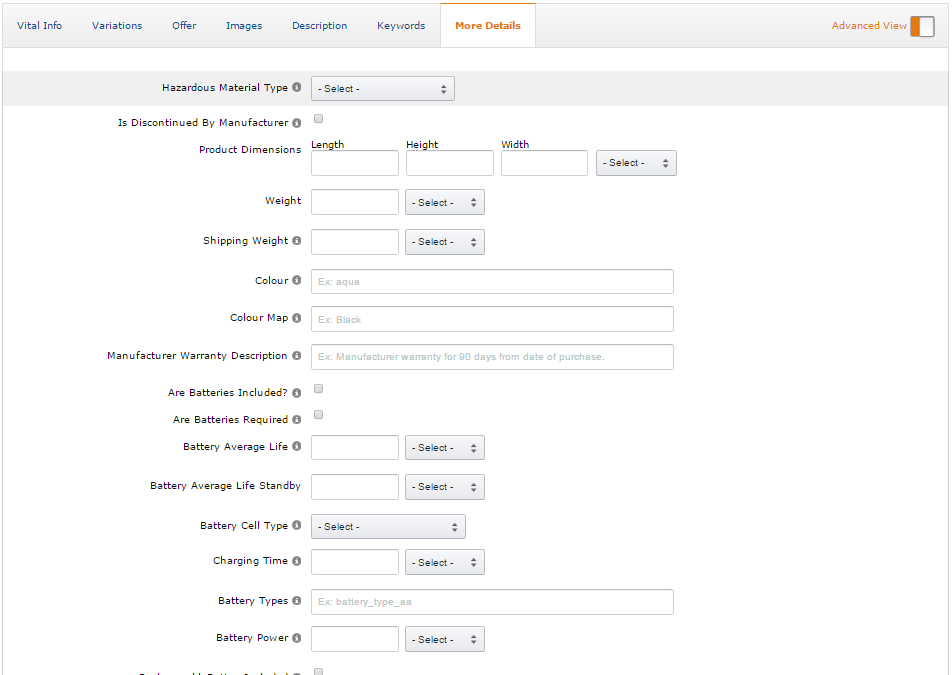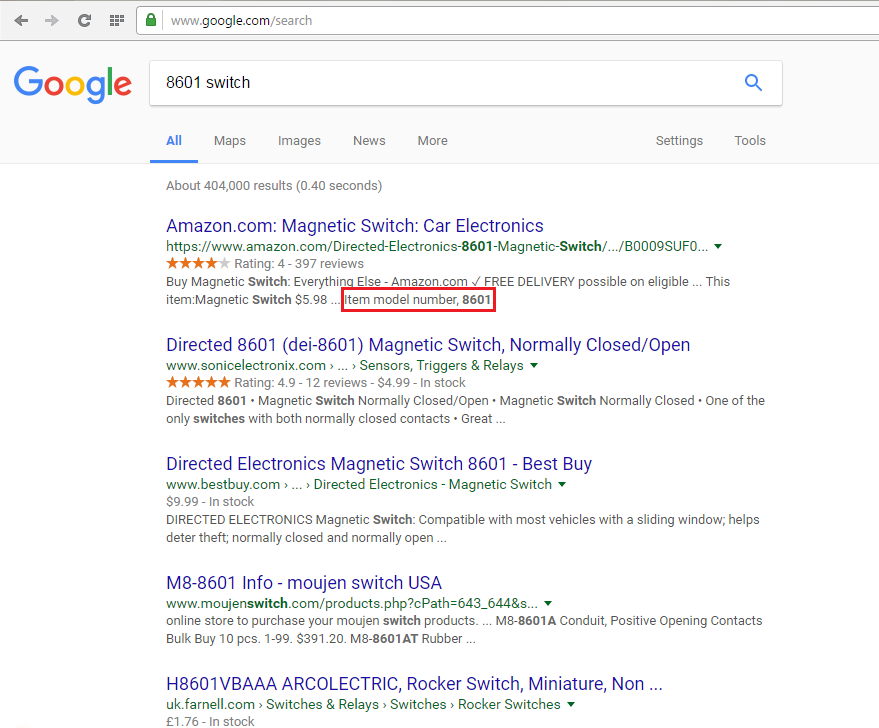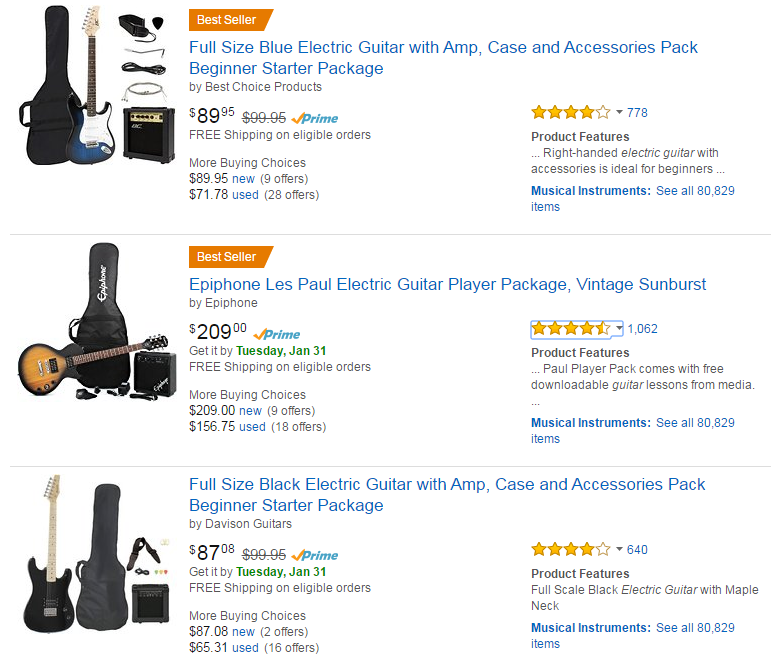Amazon’s near-infinite product library is an incredible resource for buyers, but it can also make it incredibly difficult for brands to stand out from the crowd. You need to be appealing not only to potential customers, but also to Amazon’s Search Rank algorithm, which are two entirely different critics.
Some traditional rules of search engine optimization (SEO) apply on Amazon as well, but they need to be adapted for Amazon’s environment because of the company’s secrecy on how the process works. The search engine—A9—is responsible for converting a user’s search query into a relevant result, which is more complicated than it might sound. Unlike Google, Amazon’s main goal is to convert customers, and so A9 uses functional search techniques, algorithms, and correlation/comparison approaches to deliver not only relevant results, but also results that are more likely to convert.
It means that optimizing a product listing is much more than finding the right keywords. Every product listing needs to prove that it can be a converting engine for Amazon.
To make the matter more complicated, a listing that’s a winning bet right now might not always perform strongly—there’s no good way to know when, or how, Amazon will change A9 in the future.
There’s been a lot of trial and error when it comes to Amazon, but there are some fairly consistent rules for optimization that remain solid for 2017:
1. Leverage all of the available options to describe your product
You need to add more than just the title/bullets/keywords to your listing.
The first step to any good SEO initiative is to understand that search is not only about the system that finds a product, but it’s equally important to make the product easier to find (dubbed “findability”).
Amazon looks deep in analytics to determine how users make queries to their site to find the products that they need, and this effort could not be more easily seen than in the structure of the product listing backend, which is designed for sellers to enter details that are relevant to their products. They’ve figured out “what parameters” matter for a particular product category based on reviewing search patterns and the products, and leave it to the seller to provide these values in the appropriate fields. (Note: the fields for a particular product’s backend can be different, as it depends on the category that the product is in.)
The full potential of this area is often underutilized by many sellers, despite its clear use in many of the result filtering options used by shoppers on Amazon.
The backend is how you describe your product to Amazon’s search engine for indexing, often before a sale (or the customer search) is ever made. It’s important to consider the relationship between the specificity of the information you enter here, and the impact it has on your product’s relevance to a shopper.
This approach for providing structured data to Amazon is fundamentally parametric or field/rule-based search, which a technique focused on returning highly precise results to user requests. In the context of Amazon, it provides a solid foundation for their search engine, as well as the basic framework and data needed for search filtering options, which allow users to sort results by specific elements related to that particular product type.

Within Amazon, each field in the backend has a certain amount of weight with some fields affecting how your products would rank overall more than others. So, while the keywords in your title and bullets matter, it’s only one piece of the puzzle that makes your product easier to find. Fields such as your product model number, charging time or even stain resistance can have a cumulative effect on how easily buyers discover your products.
By being thorough and completing the fields relevant to your product, you’re providing A9 with all of the information that it considers important for that category. This gives your product the best chance possible to rank in Amazon’s search results at the start.
 Example: Surveillance Camera Product Listing
Example: Surveillance Camera Product Listing
A. What Works
- Ensure that you enter values for the fields available your product. Remember: this does not include the product title/description.
- Take into consideration that users would browse and filter results using option such as the colour map or material type provided by Amazon—these fields power those filtering options.
- Ensure that important identifiers, such as manufacturer model numbers and part numbers, are filled in. As Amazon pages are indexed by Google, fields such as model numbers are also indexed, which can help searchers find your Amazon page—even if it’s not mentioned in your product title, bullets or copy.

B. What Doesn’t Work
- Don’t fill these fields with false and misleading information for your product. If it doesn’t include a battery, you shouldn’t include charging time. If your product doesn’t include a camera, there’s no need to enter megapixels.
- At best, you’ll see no effect or your listing will be lightly penalized. For example, if you’re stuffing irrelevant keywords* into your backend search terms, you aren’t going to rank higher, but possibly lower). Worst case scenario, your listing can be reported for false or misleading information, and will likely be suspended.
- For example, Amazon clearly states that some of the reasons for not using all keywords “may include, but are not limited to, search computational efficiency, potential manipulation of search results, irrelevant search terms, and offensive or illegal terms.”
2. Keep your sales rank up with the combined importance of pricing, discounts and optimizing page listing for conversions
With Amazon, there’s a known-unknown relationship between sales activity and your sales rank. Going a bit further though, the sales rank for your particular product is linked to your product’s rank in the results page for a search query.
The sales rank is a relative figure, as the product is competing against other products in a particular category. The calculation is based on the product’s all-time sales, but recent sales performance is weighted in more than older sales performance. For example, the thirty (30) sales that you had yesterday are taken into consideration more than three hundred (300) sales that you had twenty days ago.
In essence, the more you sell, the higher you rank. The higher you rank, the more you sell. In order to have the best chance to continue converting customers and generating sales in the future through your rank in search results, you need to monitor your sales rank, and ensure that it’s rising consistently (not dropping).
It goes without saying that this works in reverse as well: the less you sell, the lower your rank, until you can say goodbye to your sales completely. This is A9 at work. Your product may still be viable, but it appears to be no longer “relevant” to customers. The reasons for this are numerous, such as new competitors, seasonal products, and more.
You need to develop a robust strategy to boost your sales and order activity if they begin to decrease. And yes, even the best-performing, most optimized Amazon listing will begin to reduce in performance as entropy sets in.
A. What Works
Monitor and push for higher on-page conversions:
- Pages should be improved periodically. If your listing is maintaining a consistent number of sessions, but your unit session percentage is beginning to drop, consider taking steps to test and optimizing your listing with better images, copy, or pricing that can raise conversions.
Related: Optimizing the images for your product listings is one of the most important factors when it comes to increasing your brand’s sales on Amazon. Read our article on How to Optimize your Product Images for Amazon.
- Customer buying trends change with time and season—your listings should keep up.
- Tip: If your session traffic is beginning to drop off, consider using Amazon’s Advertising services. If you aren’t using Amazon Ads yet, you really should read our blog post about the value in PPC campaigns on Amazon (not only do ads bring in additional traffic and possible conversions but the automatic and manual campaigns can serve as an invaluable source of data for customer search terms that can be used for page optimization).
Better pricing, discounts and promotional activity:
- Customers are always on the lookout for a deal, and a recent survey of Amazon shoppers had 41 percent of respondents list financial incentives and discounts as a driver for making an online purchase. If your sales are slowing down, there’s no better time to run a sale or reach out to your audince and offer a discount incentive that would convince prospective buyers to commit to a purchase.
- Cross promote your products: Are you slower-moving items getting enough visibility? Consider bundling slower-moving products with the faster-selling items (ideally, they should be related) by offering a Money Off promotion.
- Tip: If your products are seasonal, consider promoting your products in the weeks leading up to the actual shopping season.
B. What Doesn’t Work
Leaving listings static.
- Both Amazon and consumer trends are constantly changing. The listing that brought in traffic and converted hundreds of customers last quarter may not perform as well this quarter. When your conversions begin to drop, so will your rank, so consider SEO and sales conversion as an ongoing process, not a one-time event.
Static Prices
- Price is a major factor in customer purchase decisions, and Amazon is focused on bringing the best deal to the consumer. As such, your pricing strategy should support periods of discount or sales to ensure that your product is appealing to (and converting!) customers.
3. Pay attention to the quantity and quality of your reviews
From the performance metrics that they track, Amazon cares if you care about your customers. Even then, they’re equally concerned about the product reviews that customers leave on your page.
In addition to pricing, your ranking in search results is also determined by the quality, quantity, and overall review rating left by your customers. And remember: it’s all about verified reviews now.
For example, take a look at the search results for “electric guitar” on Amazon:
 All three have the keyword in the title, in almost the same place; and the keyword is peppered throughout the places that matter.
All three have the keyword in the title, in almost the same place; and the keyword is peppered throughout the places that matter.
This shows an interesting relationship between pricing as well as the quantity and rating of reviews for the top results returned for this query.
The first result (A) has a sales price at $89.95 and 4.0 rating with 778 reviews.
o A has a lower price than B, as well as a lower review rating and 284 less reviews than B.
o A has a higher price and a lower rating that C, but has 138 reviews more than C.
The second result (B) has a fixed price at $209.00 and a 4.3 rating with 1062 reviews.
o B has a higher price than A, as well as a higher review rating and 284 more reviews than A.
o B has a higher price than C, as well as a higher review rating and 422 reviews more than C.
The third result has a sales price at $87.08 (C) and a 4.2 rating with 640 reviews.
o C has a lower price than A and s a higher review rating than A, but 138 less reviews than A.
o C has a lower price than B, but also has a lower rating and 422 less reviews than B.
A similar trend can be seen in everything from televisions to electric toothbrushes. While price is a major factor amongst competing products, the overall rating and quantity of reviews between competing products appear to be a differentiator and push pricier products above much cheaper competitors.
A. What Works
Follow up with your customers to increase your reviews.
- Operate within Amazon’s guidelines and develop a sequence of post-purchase customer messages to encourage product from your users. These reviews spawn trust for prospective buyers and can affect where you rank in the results. This is important for your product’s long term success.
Address your negative feedback:
- Work with your customers to right any defects or issues with sales. A review amended to three stars is still better than a one-star review.
Use your product reviews to optimize your pages.
- Your customer’s feedback can be an invaluable source of information that can be used to optimize your pages. Analyze the reviews and identify common trends that you can reuse for your page. Do they often mention a feature of your product that’s not in the original listing? Do they use your product for another purpose completely?
- Tip: Customer reviews are indexed by Amazon and Google, meaning that the terms used in reviews can also have some impact on your search traffic.
- Product reviews can be an incredible data source for mining customer search terms and potential keywords for use in your listing, backend search terms or advertising campaigns.
B. What Doesn’t Work
Incentivized reviews.
- Say goodbye to incentivized reviews, as those product reviews that came from heavy discounts or free products are now a thing of the past. Amazon wants natural or organic reviews from customers that paid your full price (or close to full price). Sellers need to deliver quality products and excellent service even more to keep review quality and quantity up.
Not addressing complaints.
- One- and two-star reviews may seem daunting to address, but the best approach is to be helpful and respond to the customer. Don’t only let them know that you’ll help – follow through!
Takeaways for optimizing your Amazon product listings in 2017
Consider that optimizing for Amazon is an ongoing test. It goes without saying that Amazon’s not going to share its formulas for what’s required for perfect product rankings with the public any time soon.
Treat the A9 engine as a black-box—that is, you have an idea of what it’s supposed to do. Now use the full scope of the inputs available from the platform and begin changing the variables that you can. More importantly, track the results of your tests over time to see what worked best for your product and category. Remember, though, the Amazon platform and its rules are always changing as the company refines and develops its system to maximize customer sales on the platform.
Getting your products noticed amongst Amazon’s 400 million other product listings is a huge challenge. If you need help with your Amazon channel, request an appointment with us here.
{{cta(‘91362601-86ca-464d-9f56-2513a8d9519e’,’justifycenter’)}}

